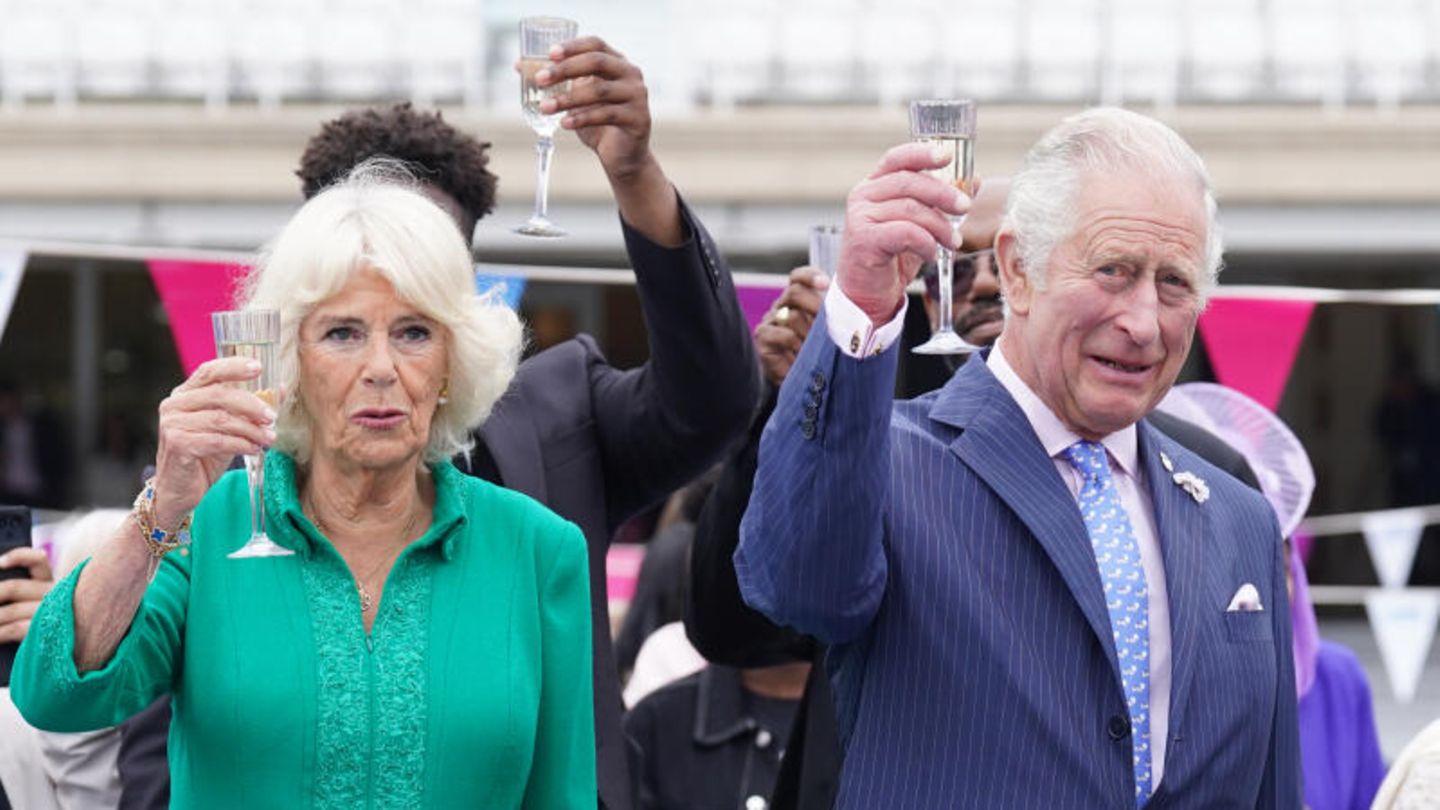You have to be king, then you could fill your stomach with fine food and drinks from morning to night. However, as the royal chef reveals, there are strict rules when it comes to the diet of the royal family. You can find out what these are here.
The diet of the royals is certainly royal, but not easy for that. Because the British royal family has a lot to consider when it comes to nutrition. Every dish has to go through a series of official controls before it can be eaten, while some foods don’t even end up on the royal table. In an interview with “The List”, the chef of the royal family personally reveals what the royal diet looks like – and which foods are absolutely taboo for Charles, Camilla and Co.
royalty
King Charles’ Inner Circle: Royal portrait reveals who the monarch is counting on
As chef Darren McGrady recounts, Queen Elizabeth II is said to have been a disciplined eater. True to the motto “You are what you eat”, she preferred healthy, wholesome and nutritious dishes – and transferred her nutritional ideals equally to her family members. Because: The health and image of the royal family were and still are the top priority. In addition, the queen was not a big “foodie”. For her, food was a means to an end, she ate to nourish her body – and what she didn’t like didn’t even make it onto the menu.
The Queen’s culinary blacklist
The beginning of their culinary blacklist makes Garlic. Although the spice plant is extremely healthy and is even considered a natural antibiotic, it is an absolute no-go for the taste of the Queen due to its intense aroma alone. As McGrady recounts, the Queen hated the smell and taste so much that she even issued an edict against garlic in her dishes before a trip to Italy. In addition, the garlic ban has practical reasons: Since the royals come into contact with many people every day, the infamous “garlic breath” should be avoided. Accordingly, onions and leeks are also a rarity in royal cuisine and are almost never consumed.
Things are getting even worse for Italian cuisine, known for its garlic-heavy dishes. Because the Queen used to have an aversion to starchy foods, especially pasta and Pizza. The latter is said to have never (!) been on the menu at Buckingham Palace, as it does not go with the upscale menu and would also violate Victorian etiquette. In addition, the consumption of pasta and pizza is too “messy”.
Heartbreak for Italian cuisine
Anyone who throws their hands over their heads and wants to express their heartfelt condolences to Prince George, Princess Charlotte and Prince Louis can breathe a sigh of relief. Duchess Kate seems to like pasta and pizza so much that she defies this rule and regularly cooks pasta with her children. “One child puts the milk in the pot, one the flour and the last one the butter,” Kate commented on the cooking actions with her children to “Express”.
Fed up with pasta
From Carbonara to Carciofi: ten typical dishes from Roman cuisine
And there is also pizza from time to time, because William is said to be a big pizza fan. McGrady says he used to make pizza for William at Kensington Palace when he was a little boy. Well at least he wasn’t denied the Italian delicacies.
Safety first
As well as pasta, included potatoes and rice lots of starch – reason enough for the Queen not to eat it. “No starch is the rule. No potatoes, no rice, no pasta for dinner,” McGrady told The Telegraph. Instead, the Queen dined on fresh salads, plenty of vegetables and quality meat. Only on special occasions did the queen indulge in potatoes, like her favorite dish, venison with parsnips, carrots and potatoes, McGrady says. But there was also a special feature here: the potatoes were measured to a uniform size before serving, so as not to further fuel the queen’s dislike.
But what never happened was raw meat. And the family chef still takes this rule seriously to this day. The meat is never prepared bloody to avoid possible health risks from salmonella and the like. Queen Elizabeth II preferred her steak well done, while William likes it medium-rare. This rule is followed by the ban on shellfish. The Queen liked Oysters, shrimp and crab anyway, avoiding the risk of food poisoning with her preference. Only Charles seems to defy this rule at times, for example when he ate two oysters at the 2013 Whitstable Oyster Festival and described them as an “acquired matter of taste”. The more often you eat them, the better they taste.
No tap water, no “foie gras” and just no fruit out of season
But the king sees things differently “foie gras”. The French specialty, which is known in this country as “foie gras”, is considered a luxury good. The pie is made from an unnaturally and abnormally enlarged goose liver, causing so much suffering to the animals that its production is now illegal in several countries. Since 2008, this has also applied to all royal residences, because at that time Charles forbade the purchase and processing of the product. Although the production of “foie gras” is forbidden by law in England, products from France are still imported. A scheme that is a thorn in King Charles’ side.
Another culinary no-go for the Queen were Out of season fruit. She loved all kinds of fruit, but only if it was regional and seasonal. Her favorite fruit was strawberries – especially those from Balmoral, which she liked to pick herself and eat with chocolate. The Queen also idolized peaches and mangoes, even if they were neither from the region nor seasonal. “She could tell you how many mangoes were in the Buckingham Palace fridge,” former royal chef John Higgins told the National Post in 2016.
Last but not least, the royals only drink the water from “Hildon Natural Mineral Water”, a company with royal approval. A bottle of Hildon costs about 5 dollars, tap water is generally unthinkable, but especially when traveling for health reasons.
Sources: , ,
Source: Stern
I am an author and journalist who has worked in the entertainment industry for over a decade. I currently work as a news editor at a major news website, and my focus is on covering the latest trends in entertainment. I also write occasional pieces for other outlets, and have authored two books about the entertainment industry.




